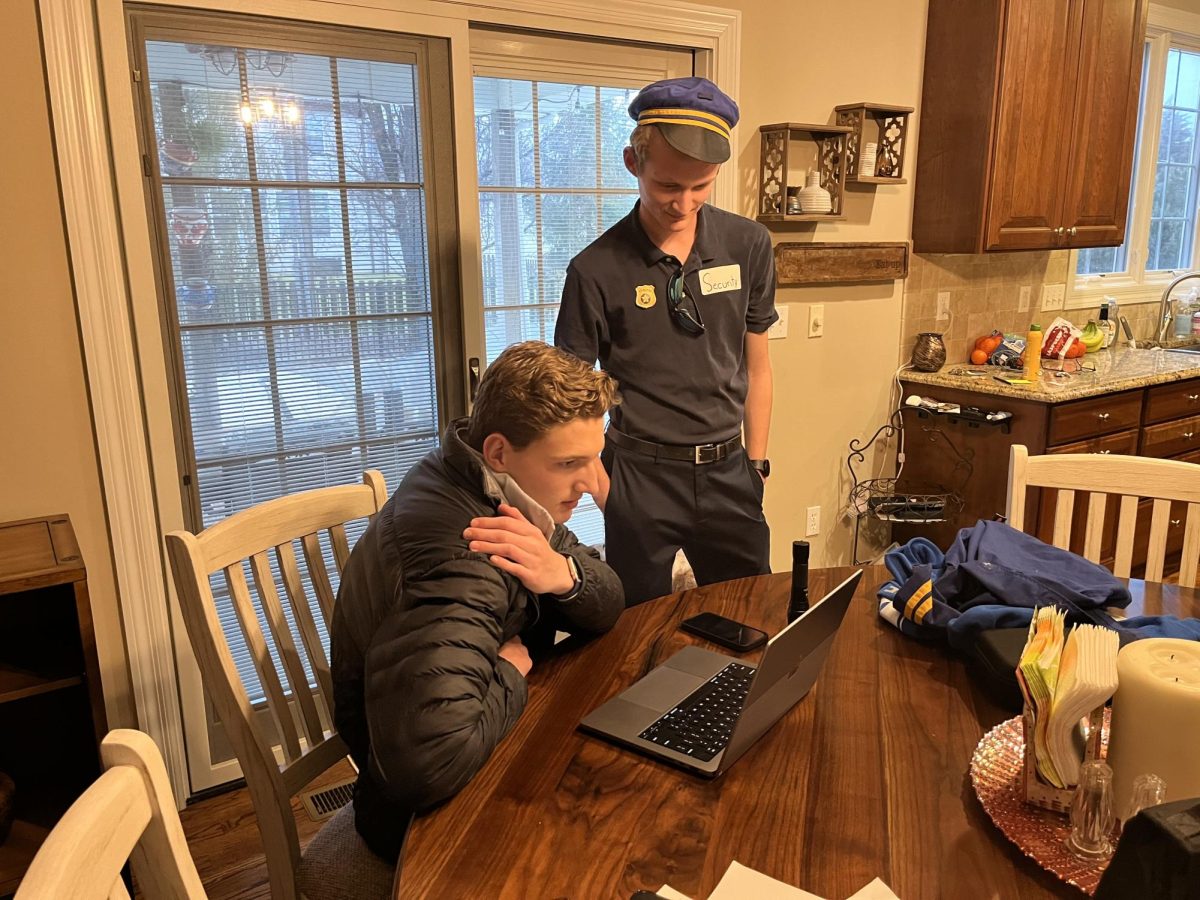Imagine a place where classes were picked, scheduling meetings took place, and everyone was peachy keen with their new schedule for the upcoming year. Now, stop dreaming. Students know how much of a pain scheduling is on their end, but in the world of Corey Snyder, Registrar, scheduling is a more complicated process than most students could imagine.
The process starts in mid to late January when Snyder holds a parent informational meeting. Then, course selection sheets are passed out to students to choose next year’s classes. This is followed by individual meetings between students and schedulers. Course requests are put into the computer, and transcripts are also printed for seniors. All of this happens in late January through February, and this part of the process is, for the most part, the only part students will see. Course selections are then mailed home for parents to review.
This information is given to Jim Sefrit, Head of Upper School, and Scott Holley, Academic Dean, for them to determine how many sections of the courses to offer and whether any courses need to be eliminated due to low interest. After this information is in, it is used to figure out teaching assignments and whether or not new teachers need to be hired. This takes place around March and April.
“As you can see, these are pretty significant decisions from both a logistical and financial perspective and are based upon student requests which is why schedule changes later are a big deal,” said Snyder.
There is a deadline around the middle of April where all students should stop requesting changes to their classes, but it is commonly overlooked.
“Many people do not pay attention to this deadline. Once I begin creating the schedule, any changes must wait until the schedules are published at the end of June to the beginning of July,” said Snyder.
Snyder runs the schedule builder about one hundred times, each time creating different placement of classes and schedules for students. He tries to get six models with a good percentage of students scheduled. Making sure no classes overlap in each student’s schedule, Snyder chooses chooses the best model.
“With the best model, I list out all of the classes by department and period to look for balance. Balance is needed within the department, within classes that meet in the same grade level so that there isn’t an overload in any period, and within the period,” said Snyder.
Then, Snyder makes one change at a time to make sure spaces in the building work out for each class. He also tries to make sure that each student can take the classes he or she requested. To evaluate the effects of his changes, he checks to see whether more or less students were able to be scheduled after the change.
“I probably do this about 50-100 times with different changes,” said Snyder.
After he gets the model structured in the best way that he can, study halls are added in, and if a student has more than one study hall in a semester, that has to be manually changed. In the end, around five to ten students’ schedules are impossible to fix, so that means they have to change something or pick a different course. Then, Snyder organizes the lunches.
“Usually upstairs classes are B lunch and downstairs are A lunch, but there have to be some exceptions in order to make sure that there is balance between the two lunches. The goal is to avoid disruptions to classes in session during lunch times with students in the hallways, etc.,” said Snyder.
In June, Snyder individually meets with new students and parents to fit them into the schedule. In early July, schedules are uploaded to Veracross and released to the students. The day that schedules are finally released, Snyder gets a flood of emails from parents and students asking for more changes to their schedule.
“I believe that I got around 50 the first day last July. I was sitting by the pool with my family. I technically am out of the office for the month of July so I make sure that I sort these emails and keep track of them. I do stop by the office periodically in July to do some of that work because if I waited until I returned in August, I would not be able to get to it all,” said Snyder.
In August and at the beginning of the school year, more schedule changes are made, about 250 in total. Snyder is given a much needed break from scheduling until the beginning of the second semester when around 200 more schedule changes are made.
In a student body of around 760 to 780 students, 450 schedule changes are made over the course of the entire year.
“Once the schedule changes end in January, we are back at step one above with the Parent Meeting in mid-late January for the next school year,” said Snyder.
Besides his position as Registrar, Snyder’s other jobs include football coaching and teaching science in the upper school. Putting together students’ schedules takes up much time in his own busy schedule. Mrs. Richardson, Upper School Administrative Assistant, helps him get everything done.
“I would be remiss if I didn’t say how much Mrs. Richardson helps me. She handles all of the appointment scheduling for my meetings with new families in June, sends out transcripts and report cards for transferring students are insurance companies, and a ton of other things that I just don’t have time to do,” said Snyder.









